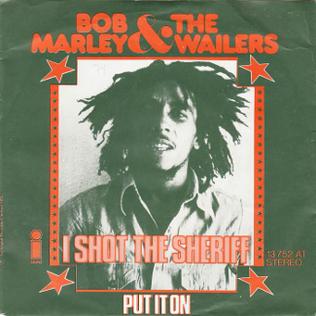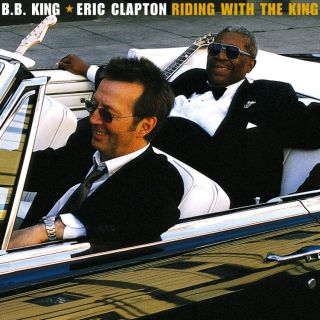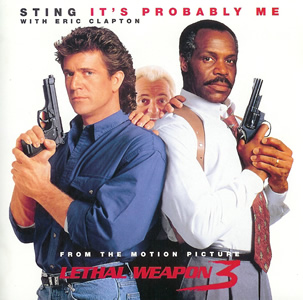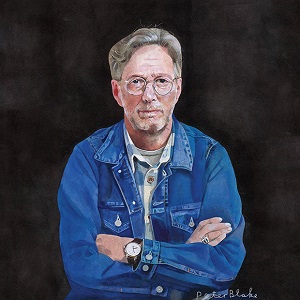
Pilgrim is the thirteenth solo studio album by the British rock musician Eric Clapton, released on 10 March 1998 for Reprise Records. The album features all-new studio-recorded material, the first to do so since Clapton's 1989 hit album Journeyman and was nominated for several music awards. Although most of the critics responded negatively to the 1998 studio effort, it was one of Clapton's most commercially successful albums, reaching the Top 10 in twenty-two countries.

"Layla" is a song written by Eric Clapton and Jim Gordon, originally recorded with their band Derek and the Dominos, as the thirteenth track from their only studio album, Layla and Other Assorted Love Songs (1970). Its contrasting movements were composed separately by Clapton and Gordon. The piano part has also been controversially credited to Rita Coolidge, Gordon's girlfriend at the time.

The singles discography of Eric Clapton consists of 24 early career singles that Clapton recorded with various groups and singers including The Yardbirds, John Mayall & the Blues Breakers, Cream, John Lennon and the Plastic Ono Band as well as Derek and the Dominos. As a solo performer, Clapton released 91 singles and various promotional formats from 1970 to date. His most commercially successful singles are "Lay Down Sally", "Wonderful Tonight", "Change the World", "Tears in Heaven" and Bob Marley's "I Shot the Sheriff", released in 1974, charting substantially better than Marley's own earlier release had, becoming a Billboard Hot 100 number-one hit.

"I Shot the Sheriff" is a song written by Jamaican reggae musician Bob Marley and released in 1973 with his band Bob Marley and the Wailers.

"Tears in Heaven" is a song by English guitarist, singer, and songwriter Eric Clapton and Will Jennings, written about the death of Clapton's four-year-old son, Conor. It appeared on the 1991 Rush film soundtrack. In January 1992, Clapton performed the song in front of an audience at Bray Studios, Berkshire, England for MTV Unplugged, with the recording appearing on his Unplugged album.

"Wonderful Tonight" is a ballad written by Eric Clapton. It was included on Clapton's 1977 album Slowhand. Clapton wrote the song about Pattie Boyd. The female vocal harmonies on the song are provided by Marcella Detroit and Yvonne Elliman.

Behind the Sun is the ninth solo studio album by Eric Clapton, released on 11 March 1985 by Duck Records / Warner Bros. Records. It is Clapton's first collaborative project with Phil Collins who co-produced the album and played on some of the tracks. While recording the album Clapton temporarily split with his wife.

"After Midnight" is a rock song by J. J. Cale, first released in 1966. Eric Clapton later covered it for his eponymous album, released in 1970. Clapton's rendition became a success, prompting Cale to re-record the song for Cale's 1971 album Naturally. In 1987, Clapton later re-recorded the song for a Michelob beer commercial and then released the re-recording as a single. "After Midnight" has been considered one of Clapton's signature songs throughout his career. Other artists covered the song in later years.

"Change the World" is a song written by Tommy Sims, Gordon Kennedy, and Wayne Kirkpatrick and recorded by country music artist Wynonna Judd. A cover version was recorded by English singer Eric Clapton for the soundtrack of the 1996 film Phenomenon. Clapton's version was produced by R&B record producer Kenneth "Babyface" Edmonds.

Riding with the King is a collaborative album by B.B. King and Eric Clapton that was released in 2000. It was their first collaborative album and won the 2001 Grammy Award for Best Traditional Blues Album. The album reached number one on Billboard's Top Blues Albums and was certified 2× Platinum in the United States. Riding with the King was also released on a DVD-Audio in higher resolution and with a 5.1 surround sound mix in 2000.

"It's Probably Me" is a song originally released in 1992 as a collaboration by Sting featuring Eric Clapton, Michael Kamen, and David Sanborn. Released from the soundtrack to the action comedy film Lethal Weapon 3 in June 1992, the song reached number 20 on the US Billboard Album Rock Tracks chart and number 12 on Canada's RPM 100 Hit Tracks chart. It was more successful in Europe, peaking at number one in Italy, number four in France, and number six in the Netherlands.

"Bad Love" is a song recorded by English singer and guitarist Eric Clapton, who co-wrote it with Foreigner's lead guitarist Mick Jones. The track was released in the UK in January 1990 as the first single from Clapton's 1989 studio album Journeyman.

Live from Madison Square Garden is a double CD and DVD live album by Eric Clapton and Steve Winwood, which was released on 19 May 2009 by Duck / Reprise Records. The album is made up of recordings from Clapton and Winwood's performances at Madison Square Garden in February 2008. It is Clapton's ninth live album and Winwood's first live album as a solo artist.

"I Ain't Gonna Stand for It" is the second single from Stevie Wonder's 1980 album, Hotter Than July. It reached number four on the Billboard R&B singles chart and number 11 on the Hot 100. It also hit number 10 on the UK Singles Chart. The song is famous for Wonder's imitation of a seasoned country-and-western crooner and his inspiring drumming. Charlie and Ronnie Wilson of The Gap Band provide backing vocals on the song. It was covered by Eric Clapton in 2001.

American country music artist Eric Church has released seven studio albums, two live albums, three extended plays, and 29 singles. He made his debut on the Billboard Hot Country Songs with his 2006 single "How 'Bout You". Church charted eight more singles between then and 2011 when he achieved his first number-one single with "Drink in My Hand". This would be the first of six solo number-one singles for him in his career, the other five being "Springsteen" in 2012, "Give Me Back My Hometown" and "Talladega" in 2014, "Record Year" in 2016, and "Some of It" in 2019. Church was also a featured artist on four other songs that have reached the top of the country music charts. These are Jason Aldean's "The Only Way I Know" in 2012, Keith Urban's "Raise 'Em Up" in 2015, the multi-artist collaboration "Forever Country" in 2016, and Luke Combs' "Does to Me" in 2020.

Forever Man is a compilation album by the British rock musician Eric Clapton and was released through Reprise Records.

"Blue Eyes Blue" is a pop song written by American songwriter Diane Warren. The tune was written for the 1999 soundtrack of Runaway Bride. The British rock musician Eric Clapton recorded the song for the soundtrack and released his performance of the song as a single on July 20, 1999, for Reprise Records.

"Promises" is a single released by the British rock musician Eric Clapton in September 1978. It is part of his studio album Backless.

"Circus Left Town", also known as "Circus" is a ballad written by the British recording artist Eric Clapton. The rock musician wrote the song about the last night he spent with his then four-year-old son Conor. Although Clapton played and recorded the song for his 1992 million seller live album Unplugged, he decided to release the title six years later as a re-recording for both his 1998 effort Pilgrim and as a single release. However, Clapton played the song live for his 1992 Eric Clapton World Tour, before it came out on any recording formats.

I Still Do is the twentieth studio album by English musician Eric Clapton, and was released through the independent Bushbranch Records/Surfdog Records label. The album is a combination of new material written by Clapton and classic songs, contemporary tunes and influences interpreted in his own style.





















